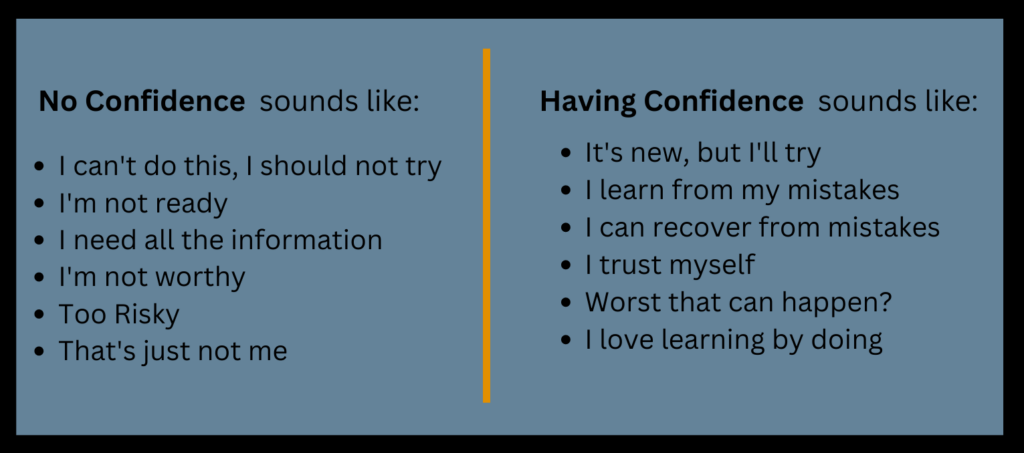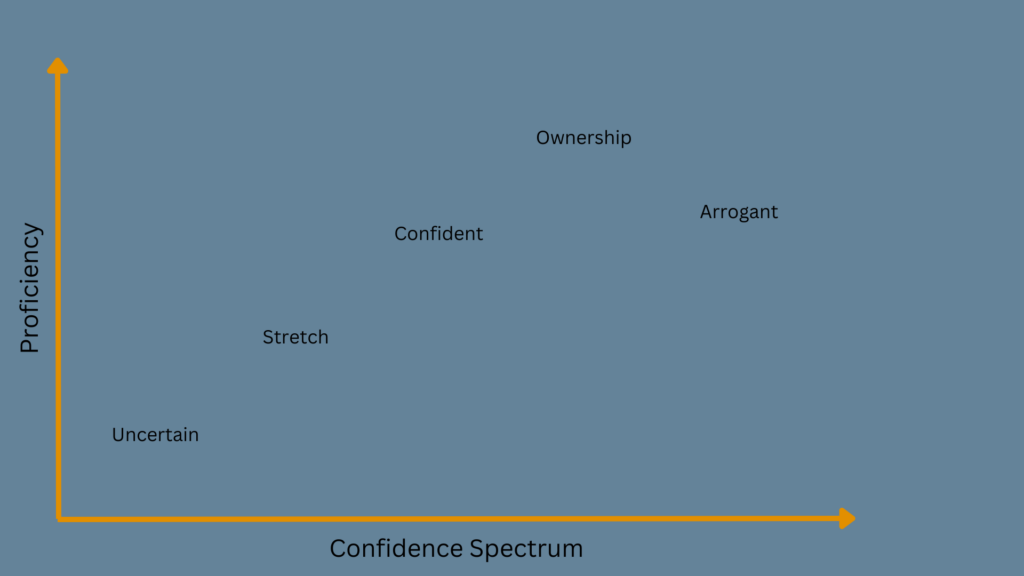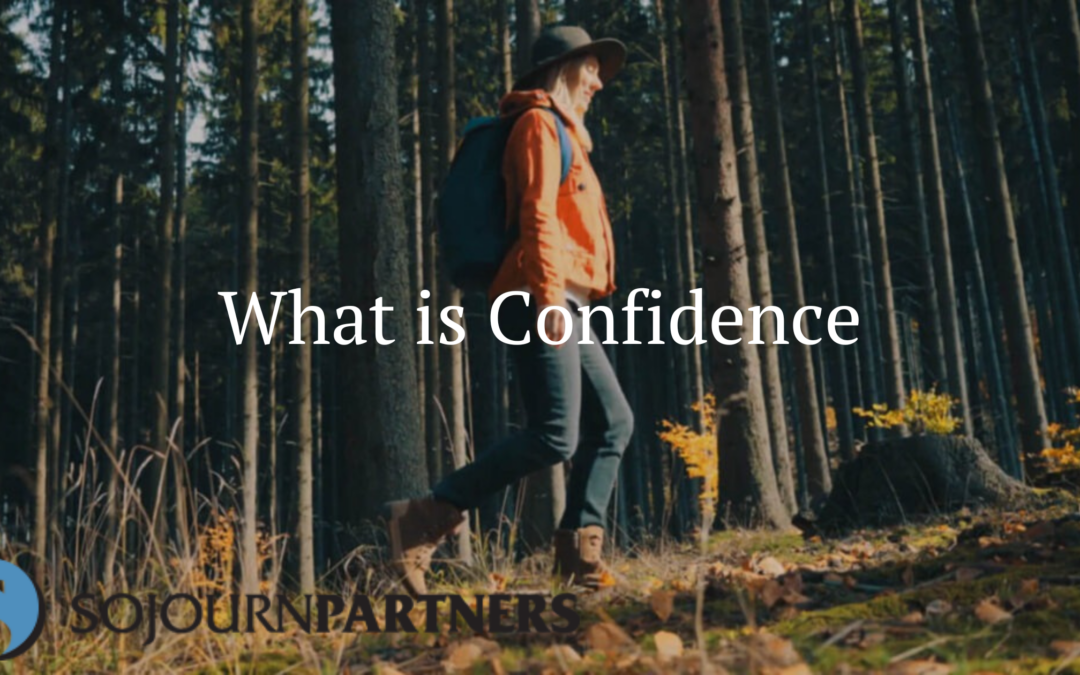What Is Confidence? How to Build Confidence
If I could gift anybody a tool to build success and a strong well-being, it would be a sense of confidence. However, confidence is something that only we can build for ourselves. And it’s never totally resolved. If we always felt fully confident, it’s likely would never stretch ourselves or be as engaged as we could. Confidence is built through experience that we can only give ourselves. We do this by putting ourselves in situations where we learn and grow. A simple example that most of us can relate to is having to give a special presentation in front of a group of people. Even though we may know the content of the talk, and even if we’ve given it several times, there’s still a little question about how we’ll perform.
As we explore confidence, we need to know what it is, what it looks/sounds like, and how we can control it. In this two part series, we will explore these topics and build towards how to use confidence to take full ownership of our powers.
What is Confidence?
Defining confidence is the first step to understand how we gain or lose it. The Merriam-Webster Dictionary provides three great confidence definitions. The first is “a feeling or consciousness of one’s powers”, the second is “faith or belief that one will act in a right, proper, or effective way”, and the third is “the quality or state of being certain”. This definition provides a framework to say confidence is not a static trait or quality. It ebbs and flows as we move from point to point in our personal or work lives. No one is confident 100% all the time, but we can teach ourselves to recognize when we have lost confidence and pull ourselves back. However, to do that, we have to learn what not having confidence and having confidence sounds and feels like.
How Confidence Sounds and Feels
We have all had times in our lives where we are bogged down by self-talk that prevent us from recognizing our total powers. The chart below can help us recognize some of that self-talk that prevents them from being confident. The left side of the chart are thoughts and feelings we have that sap our confidence. On the right side are the thoughts and feelings we can push into our minds to help us regain confidence [insert picture]. I am not suggesting that pulling yourself up and just being confident is easy. However, when you recognize our confidence has drained, we can tell ourselves some of these phrases to help get us back on track.

| No Confidence (sounds like) | Having Confidence (sounds like) |
|---|---|
| “I can’t do this, I should not try” | “It’s new, but I’ll try” |
| “I’m not ready” | “I learn from my mistakes” |
| “I need all the information” | “I can recover from my mistakes” |
| “I’m not worthy” | “I trust myself” |
| “Too risky” | “Worst thing that can happen?” |
| “That’s just not me” | “I love learning by doing” |
Confidence Evolves
Building confidence is a mindset that evolves as we build up our proficiency in something over time. While the adage of “fake it until you make it” may work from time to time, it is not a long-term solution to maintain confidence. In the confidence scale below, as your proficiency in a given task (i.e.: giving a speech), or situation grows, you can move from uncertainty to full ownership of the material, expectations of questions people may ask, how to respond and a knowing that whatever happens you will figure out how to handle any situation. Early in our quest to proficiency we are uncertain of ourselves. As we move through the stretch phase into confidence, we develop a sense of what we are able to achieve. The pinnacle of the scale is ownership. Ownership is a fully developed sense that you are the best at what you do. This is an internal feeling, as Webster puts it, “a feeling or consciousness of one’s powers”. Most importantly to remember is that it is a feeling we have, we control, and we internalize.

Control Your Power
The key to understanding your own power is that others do not control it and that you can notice when others try to take it away from you. Once, when I wanted to start a new project, I shared it with a colleague who immediately said to me, “Sounds good, but you have no background in that”. They could be right, or they could be projecting their own lack of confidence in the subject. They may see me as arrogant, or annoyed that I am stretching in a direction they are unable. Through this exchange, they were really reflecting on their own lack of power and projecting it towards me. I can either let them take my power, or not. It’s up to me.
Falling Back Down
When ownership moves from an internal manifestation to an outward projection, we can fall back down the scale into arrogance. Arrogance is not something you feel, but how others feel about you. It’s a trait that is in the eye of the beholder – the person you are interacting with. It is a fine line to walk in demonstrating your power with ownership and falling into arrogance. Therefore, if you believe someone comes across as arrogant, check to make sure you are not envious of their power and confidence. It is also easy for us to appear arrogant if we are perceived as over confident. We should be careful to show proper humility. The critical point here is as we evolve our confidence in something, be mindful that others will sometimes try to keep us in check. Make sure our power remains with us, not them.
The Five Components of Confidence
There are five components to discovering our confidence or lack thereof:
- Controlling Outcomes – Our ability to control outcomes in our environment. We are the leader of our own outcomes, not a victim of circumstances.
- Self-Expression – Our ability to express ourselves in various situations and feel heard. Speak up when we need to, without fear of being judged.
- Ability to Perform – Our self-belief in our ability to learn, experience, and accumulate knowledge. This includes our ability to be comfortable and maneuver in ambiguity. Our ability to think and act on our feet.
- Humility – Our comfortability with not having all the answers and an awareness that others don’t either. We are not perfect, and that is okay.
- Social Agility – Our awareness that others tend to reflect their own confidence on us. We cannot rely on others for our own sense of confidence. We rely on ourselves.
What Is Confidence Wrap Up
In our next blog, we will take a deeper dive into the five components of confidence and suggest some ways you can use them to help yourself. While it appears that some people just have it, being confidence or having confidence is a learned skill. Understanding how confidence sounds and feels is the first step in being able to overcome fear or a lack of confidence. The confidence scale is just a visualization of how over time and proficiency our confidence can develop. This scale is dynamic, and we slip back and forth into the different levels constantly, and that is healthy and allows us to grow ourselves and our own power in situations. If you want to learn more about how to build your confidence, we are here to help.

